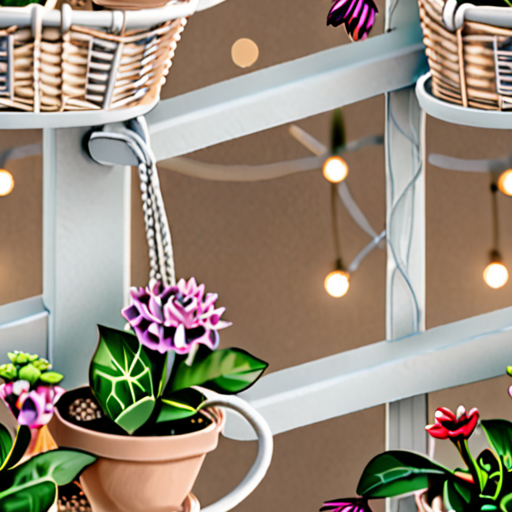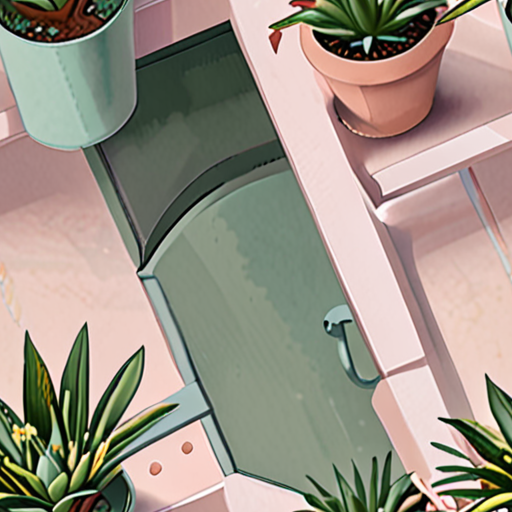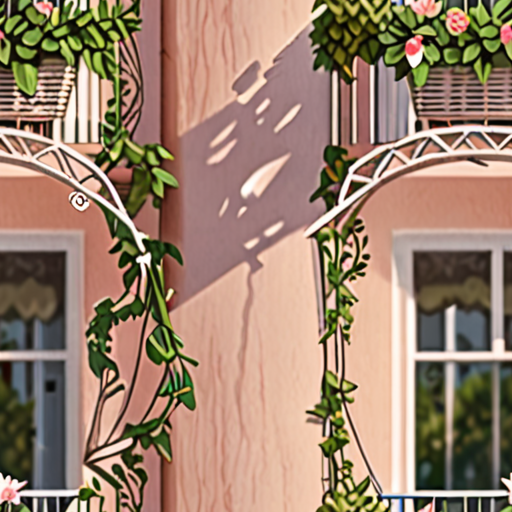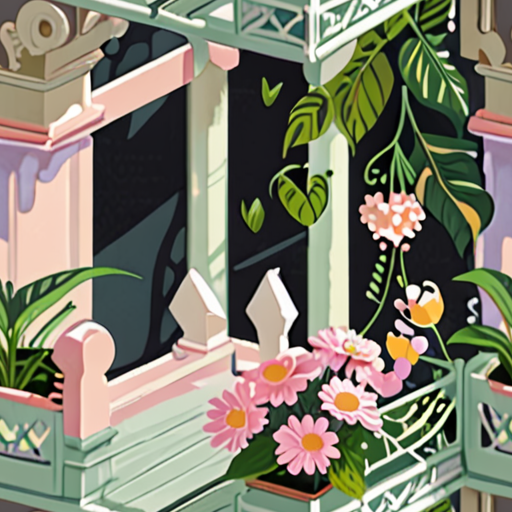Are you tired of feeling like your small balcony is just a forgotten afterthought? With a little creativity and some expert advice, you can transform even the tiniest of spaces into a beautiful oasis that reflects your personal style and provides a serene retreat from the hustle and bustle of everyday life.
Whether you’re looking to add some color and vibrancy to your small balcony, maximize space with clever plant arrangements, or enclose the area for added functionality, we’ve got you covered. In this comprehensive guide, we’ll explore the ins and outs of small balcony decor, from choosing the perfect color scheme to repurposing items for a unique look, and everything in between.
From IKEA furniture ideas to DIY projects, we’ll delve into the world of small balcony design and provide you with practical tips and tricks to help you achieve your dream space without breaking the bank. So why wait? Let’s get started and turn your small balcony into a stunning haven that you’ll love spending time in!

Transform Your Small Balcony into a Beautiful Oasis
I’m excited to share my expertise on how to turn your tiny balcony into a stunning retreat.
- Add Some Greenery: Plants are a great way to bring life and color to your balcony. Choose low-maintenance options like succulents or herbs that thrive in containers.
- Incorporate Textiles: A small outdoor rug, throw pillows, or a blanket can add warmth and texture to your space.
- String Lights Magic: Fairy lights or string lights can create a cozy ambiance and highlight your balcony’s unique features.
- Diy Privacy Screen: Create a sense of seclusion with a DIY privacy screen made from reclaimed wood, bamboo, or even a trellis.
- Light Up the Night: Solar-powered lanterns or LED candles can add a warm glow to your balcony without worrying about electricity costs.
- Make it Functional: Incorporate storage bins, hooks, or a small table to keep your belongings organized and make the most of your space.
- Get Creative with Decor: Hang wind chimes, add a statement piece of art, or display personal treasures to give your balcony personality.
- Don’t Forget About Comfort: Invest in a comfortable outdoor chair or hammock to enjoy your balcony’s views and fresh air.
- Consider Vertical Space: Use wall-mounted planters, shelves, or a vertical garden to maximize your balcony’s height and add visual interest.
- Bring in Nature Sounds: Add a water feature, bird feeder, or a wind chime to create a soothing atmosphere and connect with nature.
- Make it Tech-Friendly: Install a Bluetooth speaker, a wireless charging station, or a smart plug to enhance your balcony experience.
By incorporating these ideas, you’ll be well on your way to transforming your small balcony into a beautiful oasis that reflects your personal style and enhances your outdoor living experience.
What is a Very Small Balcony Called?
A very small balcony is commonly referred to as a Juliet balcony.
- A Juliet balcony is a type of balcony that is typically narrow and shallow, often extending from a window or a set of French doors.
- It is usually found on the upper story of a building and serves as a decorative feature rather than a functional space.
Characteristics of a Juliet Balcony
A Juliet balcony is characterized by its:
- Narrow width, often measuring between 12 inches to 24 inches in width.
- Shallow depth, typically ranging from 12 inches to 36 inches in depth.
- Decorative railing or balustrade, which may be made of metal, wood, or glass.
- Connection to a window or a set of French doors, allowing for ventilation and natural light.
Difference Between a Juliet Balcony and a Full-Sized Balcony
The main difference between a Juliet balcony and a full-sized balcony is the size and functionality of the space.
- A full-sized balcony is a larger, more spacious area that can accommodate furniture, plants, and other features.
- A Juliet balcony, on the other hand, is a smaller, more minimalist space that is primarily decorative in nature.
Design Considerations for a Juliet Balcony
When designing a Juliet balcony, consider the following factors:
- Material selection: Choose materials that are durable, low-maintenance, and suitable for outdoor use.
- Railing style: Select a railing style that complements the architectural style of the building and provides adequate safety features.
- Lighting: Incorporate lighting fixtures that highlight the beauty of the balcony and provide sufficient illumination for nighttime use.
Benefits of a Juliet Balcony
A Juliet balcony offers several benefits, including:
- Improved ventilation and natural light.
- Enhanced aesthetic appeal and curb appeal.
- Increased property value.

Arranging Plants on a Small Balcony
To maximize space on a small balcony, consider vertical gardening techniques.
- Install wall-mounted planters or shelves to hold potted plants, allowing for easy access and visibility.
- Utilize trellises or arbors to train climbing plants like ivy, clematis, or morning glories to grow upwards.
- Hang baskets or macramé plant holders from the balcony railing to add visual interest and free up floor space.
- Make the most of corner spaces by installing a corner shelf or a tiered planter.
- Consider a self-watering planter or a smart watering system to reduce maintenance and ensure healthy plant growth.
When selecting plants for your balcony garden, choose species that thrive in partial shade and well-draining soil.
- Select compact or dwarf varieties of flowering plants, shrubs, or trees to save space.
- Opt for succulents or cacti, which require minimal watering and care.
- Incorporate herbs like basil, mint, or rosemary into your balcony garden for fresh flavors and aromas.
- Don’t forget to leave enough space between plants for air circulation and easy maintenance.
Remember to check local regulations regarding outdoor planters and containers before setting up your balcony garden.
For more inspiration and ideas, visit our Balcony Garden Ideas page.
Learn how to create a thriving indoor garden with our guide on Indoor Gardening Tips .
Discover the benefits of Sustainable Living and how to incorporate eco-friendly practices into your daily life.

Enclosing a Small Balcony
To enclose a small balcony, consider the following options:
- Temporary Solutions
- Outdoor curtains or screens can provide temporary protection from the elements and insects.
- Bamboo roll-up blinds offer a stylish and functional solution for enclosing a balcony.
- Screens are effective for bug control, while netting makes the balcony pet-safe.
- Permanent Solutions
- Premade screen panels or a screen porch awning can provide a more permanent enclosure for your balcony.
- Consider consulting a professional contractor or builder to determine the best option for your balcony size and style.
- Design Considerations
- When designing a balcony enclosure, consider factors such as ventilation, lighting, and aesthetics.
- Choose materials that are durable, low-maintenance, and suitable for outdoor use.
- Ensure that the enclosure complies with local building codes and regulations.
- Additional Tips
- Regularly inspect and maintain your balcony enclosure to ensure its longevity and effectiveness.
- Consider adding features such as planters, seating areas, or decorative elements to enhance the functionality and appeal of your enclosed balcony.
By considering these options and factors, you can effectively enclose your small balcony and enjoy a comfortable and inviting outdoor space.
How Much Does it Cost to Enclose a Small Balcony?
The cost to enclose a small balcony can vary greatly depending on several factors, including the size of the balcony, the type of materials used, and whether you choose to hire a professional contractor.
- Materials: The cost of materials can range from $300 to $1,500, depending on the type and quality of materials chosen.
- Labor Costs: Hiring a contractor can add an additional $1,000 to $3,000 to the total cost, depending on their rates and the complexity of the project.
- Permits and Inspections: Depending on your location, you may need to obtain permits and undergo inspections, which can add an additional $100 to $500 to the total cost.
On average, the total cost to enclose a small balcony can range from $800 to $4,000, with a national average of around $2,000.
Factors Affecting the Cost
- Balcony Size: Larger balconies require more materials and labor, increasing the overall cost.
- Material Quality: High-quality materials can increase the cost, but may also provide better durability and longevity.
- Location: Permits, inspections, and labor costs can vary depending on your location.
DIY vs. Professional Installation
If you choose to install the enclosure yourself, you can save money on labor costs, but may still need to pay for materials and permits.
- Pros of DIY Installation: Save money on labor costs, gain hands-on experience, and have control over the installation process.
- Cons of DIY Installation: May require specialized skills and tools, can be time-consuming, and may not meet local building codes.
Popular Materials for Balcony Enclosures
- Aluminum: Durable, lightweight, and corrosion-resistant, aluminum is a popular choice for balcony enclosures.
- Steel: Strong and durable, steel is often used for larger balcony enclosures.
- PVC: Affordable and low-maintenance, PVC is a popular choice for smaller balcony enclosures.
Conclusion
The cost to enclose a small balcony can vary greatly depending on several factors, including materials, labor costs, and location. By understanding these factors and considering DIY installation options, you can make an informed decision and stay within budget.

What Are Juliet Balconies?
A Juliet balcony is a type of architectural feature that has gained popularity worldwide due to its unique design and functionality.
- Also known as a Juliette balcony, it is essentially a balcony consisting of a balustrade connected to the building facade without a deck to walk on.
- This design allows for maximum sunlight and ventilation into the room while maintaining a sleek and minimalist aesthetic.
Design and Functionality
The Juliet balcony typically consists of a railing or balustrade that is attached to the exterior wall of a building, often with a decorative trim or molding.
- The railing can be made of various materials, including wood, metal, or glass, depending on the desired style and budget.
- The Juliet balcony can be installed on both residential and commercial properties, making it a versatile option for homeowners and businesses alike.
Benefits of Juliet Balconies
Juliet balconies offer several benefits, including:
- Increased natural light and ventilation, which can improve the overall ambiance and comfort of a room.
- Aesthetic appeal, as Juliet balconies can add a touch of elegance and sophistication to a building’s exterior.
- Space-saving design, as Juliet balconies do not require a large footprint or deck space.
Conclusion
In conclusion, Juliet balconies are a stylish and functional architectural feature that can enhance the beauty and livability of a building.
With their sleek design, increased natural light, and aesthetic appeal, Juliet balconies have become a popular choice among homeowners and businesses looking to upgrade their properties.

0 Comments